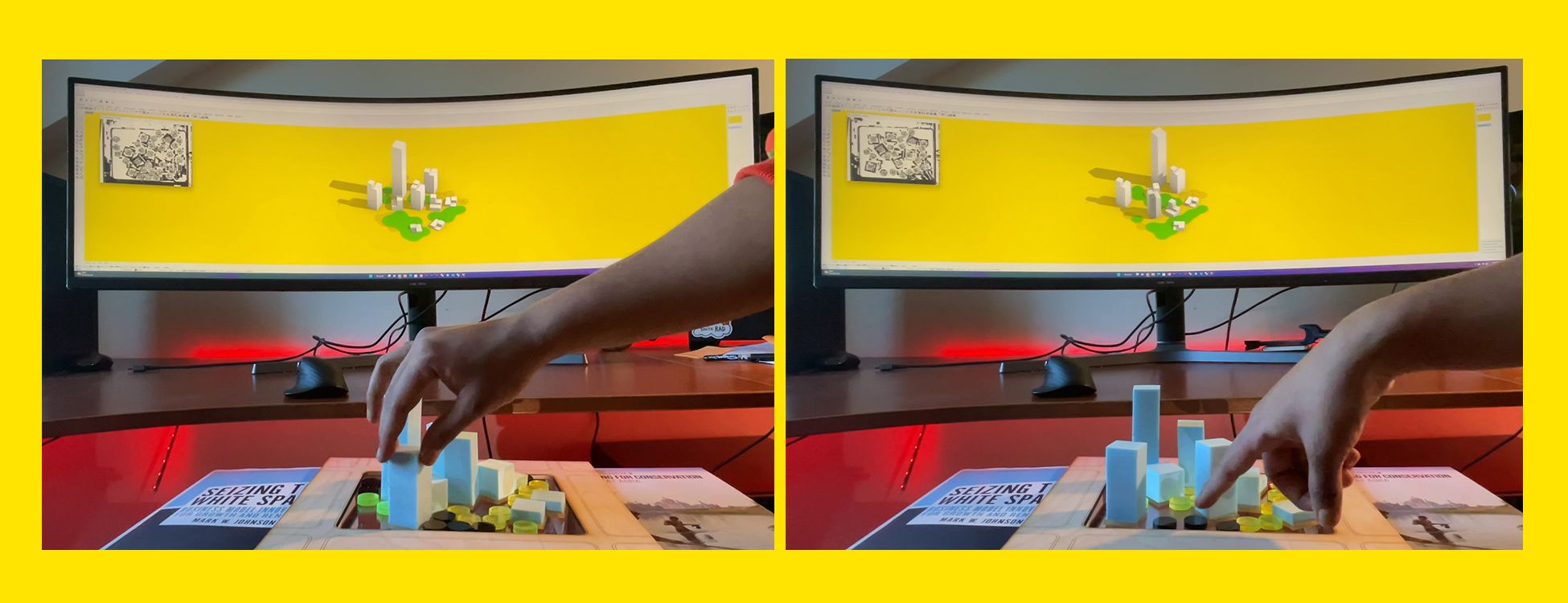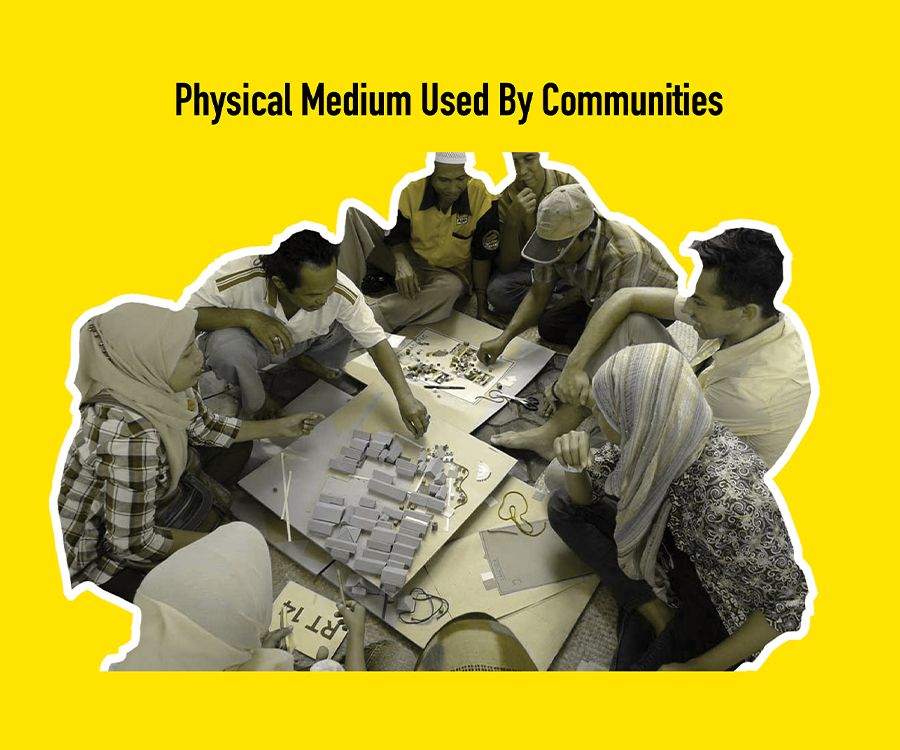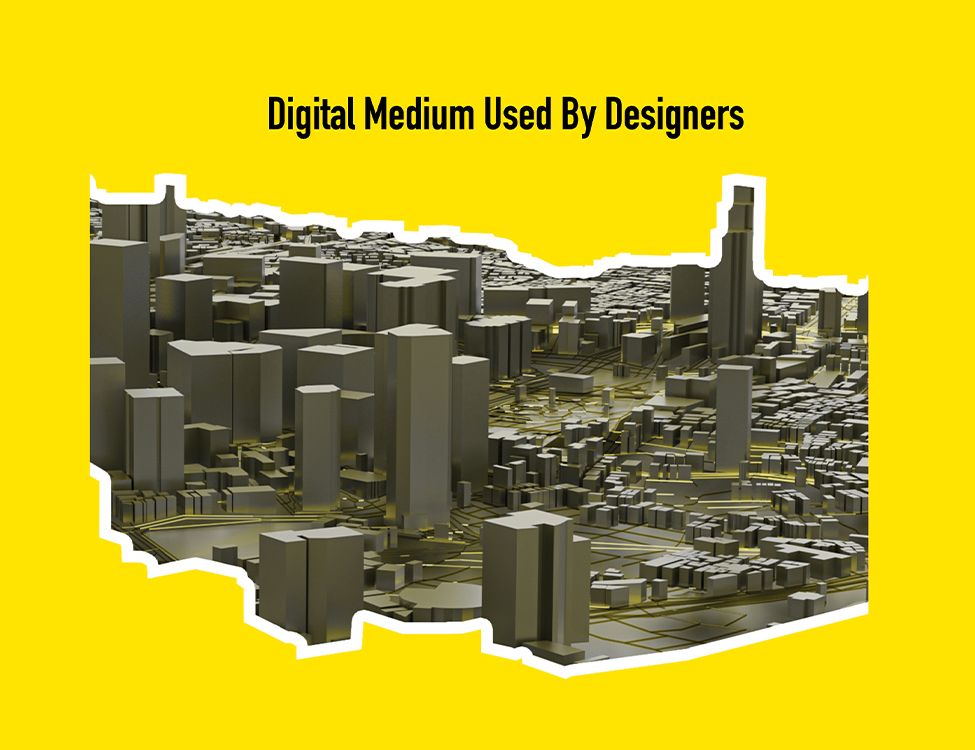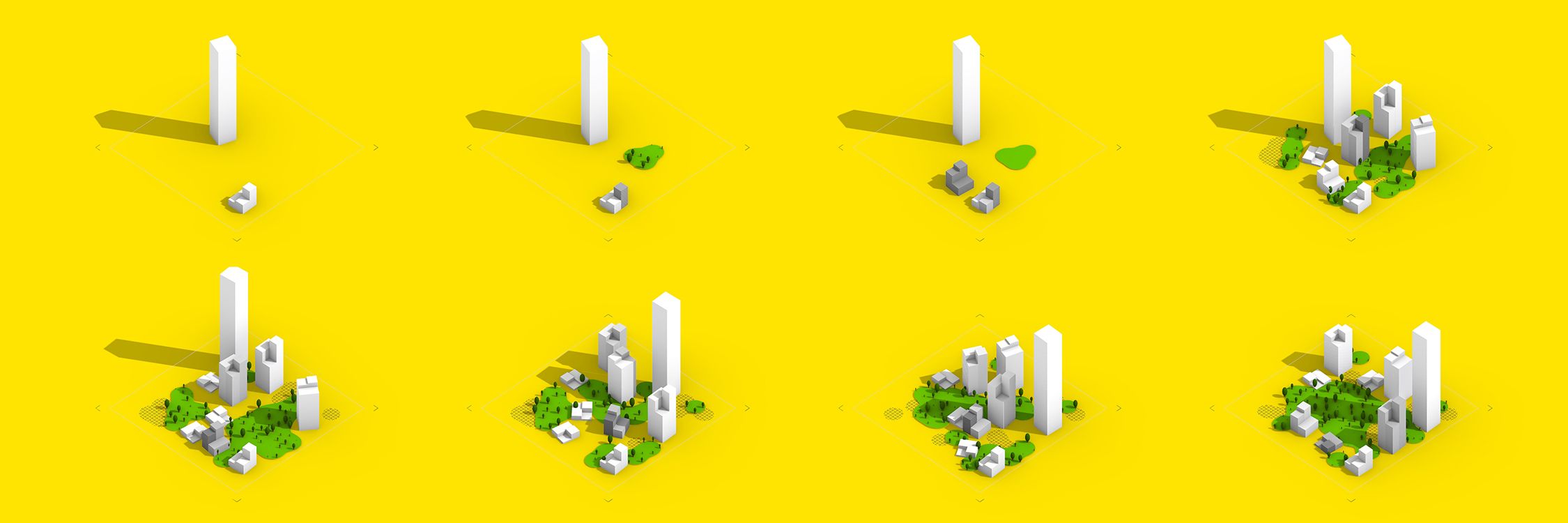Phygital Urbanism
An Interface For Participatory Urban Design
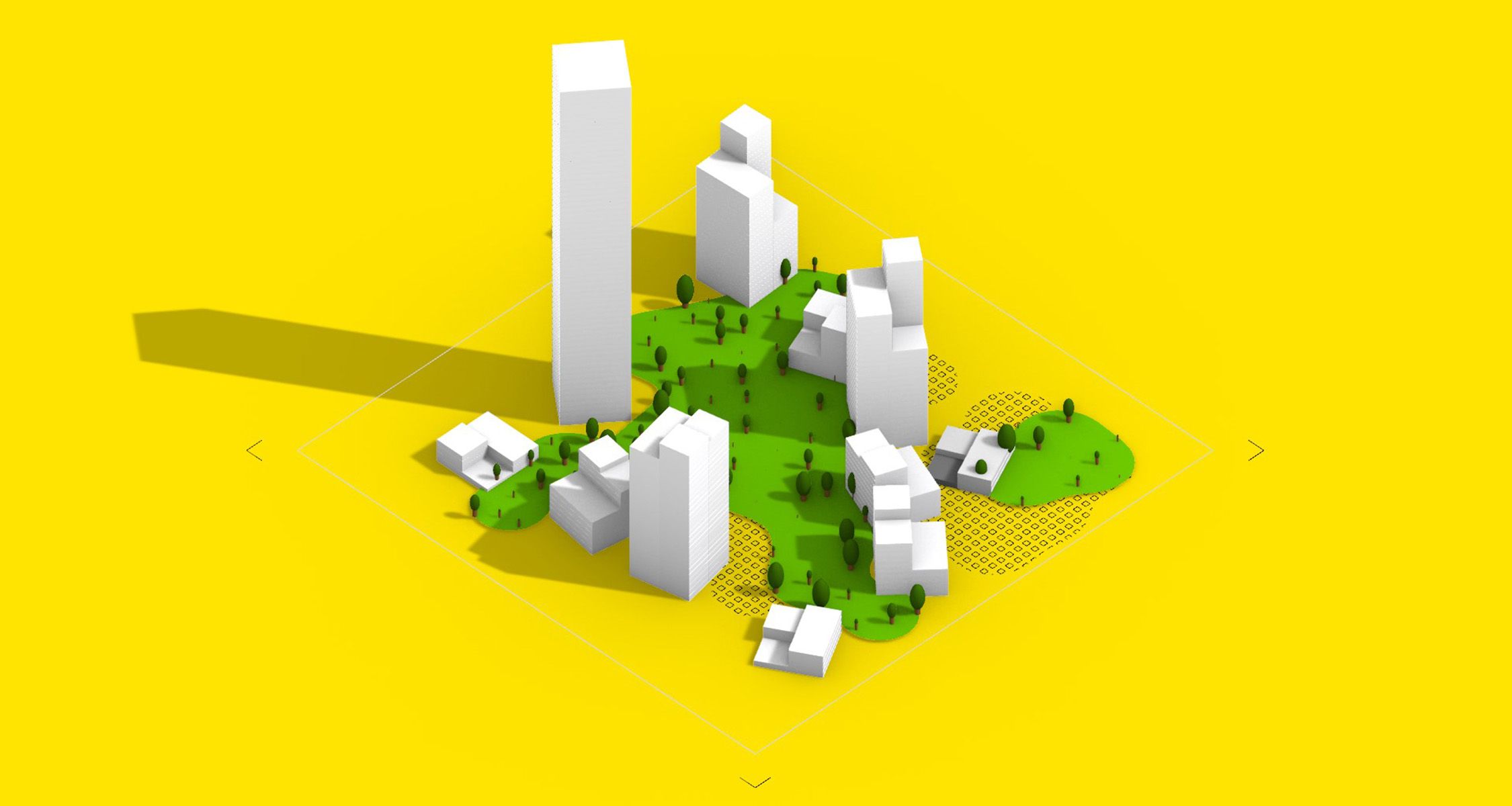
In a participatory urban design process, multiple stakeholders collaborate to envision large-scale urban forms. Physical and digital models are the two primary mediums for urban design exploration and collaboration. Physical models enable people to visualize and evaluate a proposed development's spatial relationships and design elements, whereas digital twins are virtual representations that can be used to simulate and analyze various scenarios. Currently, these two mediums exist independently, with only a few urban designers wielding capacity over them.
With some stakeholders preferring physical while others prefer digital, it is necessary to use a hybrid medium that is both physical and digital. This "phygital urbanism" project combines the advantages of physical models and digital twins, enabling stakeholders to visualize and evaluate proposed developments as well as simulate and analyze various scenarios in a virtual environment. In this prototype, communities can design an urban block using lowrise, midrise, highrise, and skyscraper blocks, as well as grey and green landscape infrastructure coins. In the rhinoceros, a digital twin is created where a generative code suggests hybrid building forms, floor areas, and other features based on the physical model, and a computer vision framework places fiduciary markers beneath the physical model for real-time interpretation.
